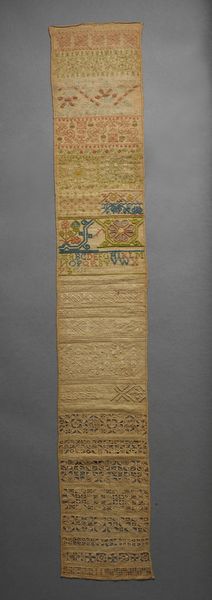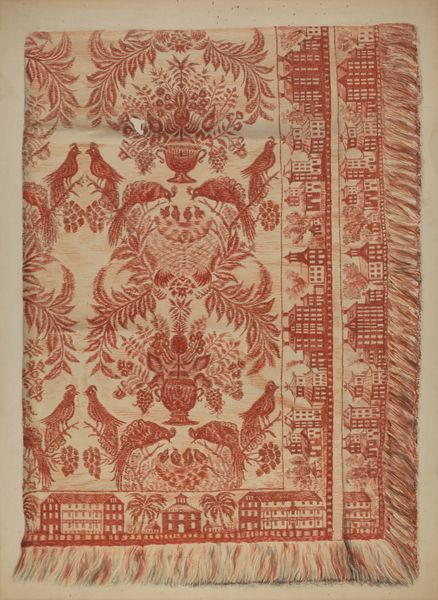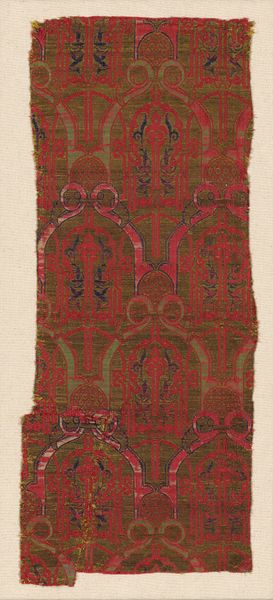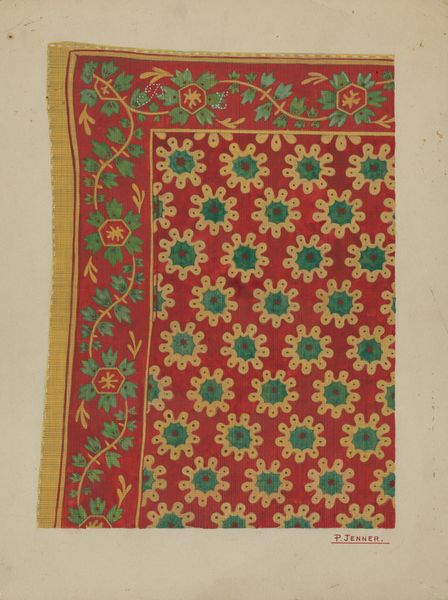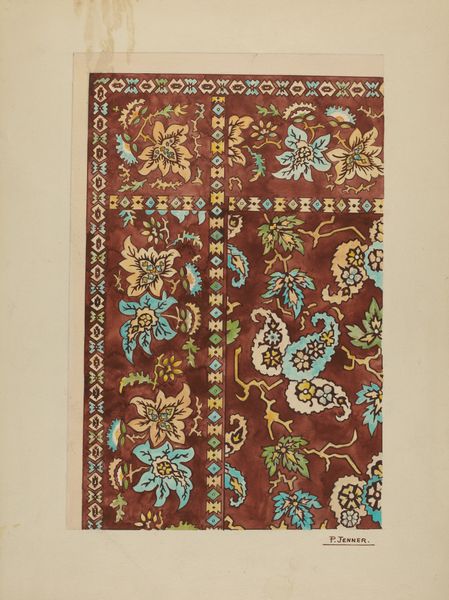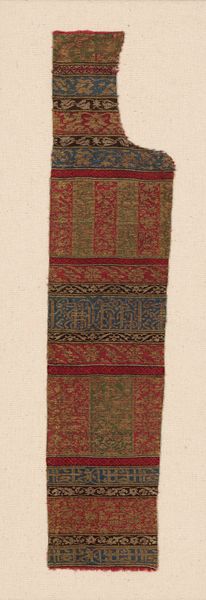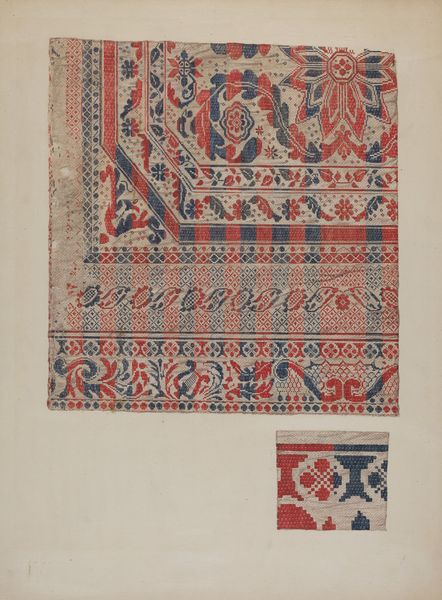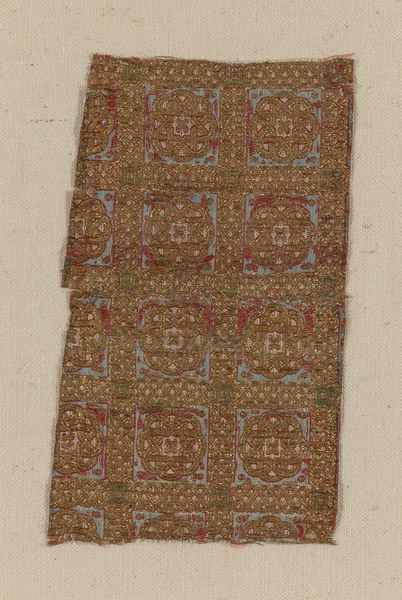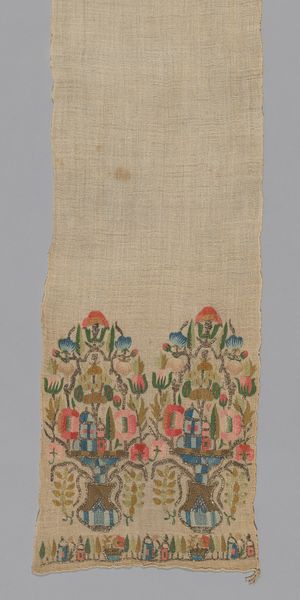
textile
#
medieval
#
pattern
#
textile
#
decorative-art
Dimensions: 19.7 × 85.1 cm (7 3/4 × 33 1/2 in.)
Copyright: Public Domain
This linen sampler was stitched by Mary Bidgood in 1611, and it offers a fascinating glimpse into the social history of education. As we can see from the alphabet and numerals, samplers like these were often made by young women to demonstrate their needlework skills and literacy, and their ability to create and identify patterns. These abilities would have been highly valued in a society where household management and family reputation were largely dependent on women. Looking at the sampler, we can think about the domestic sphere that Mary inhabited, and the social expectations placed on women of her time. Samplers such as these were essentially a form of visual communication as well as a demonstration of knowledge and skill. The motifs used here, such as flowers, animals, and geometric designs, reflect the broader cultural aesthetic of the time. Further research into 17th-century English social history and women’s education, along with analysis of similar samplers, can shed more light on the function of these types of artworks in the cultural and institutional landscape of the period.
Comments
No comments
Be the first to comment and join the conversation on the ultimate creative platform.
